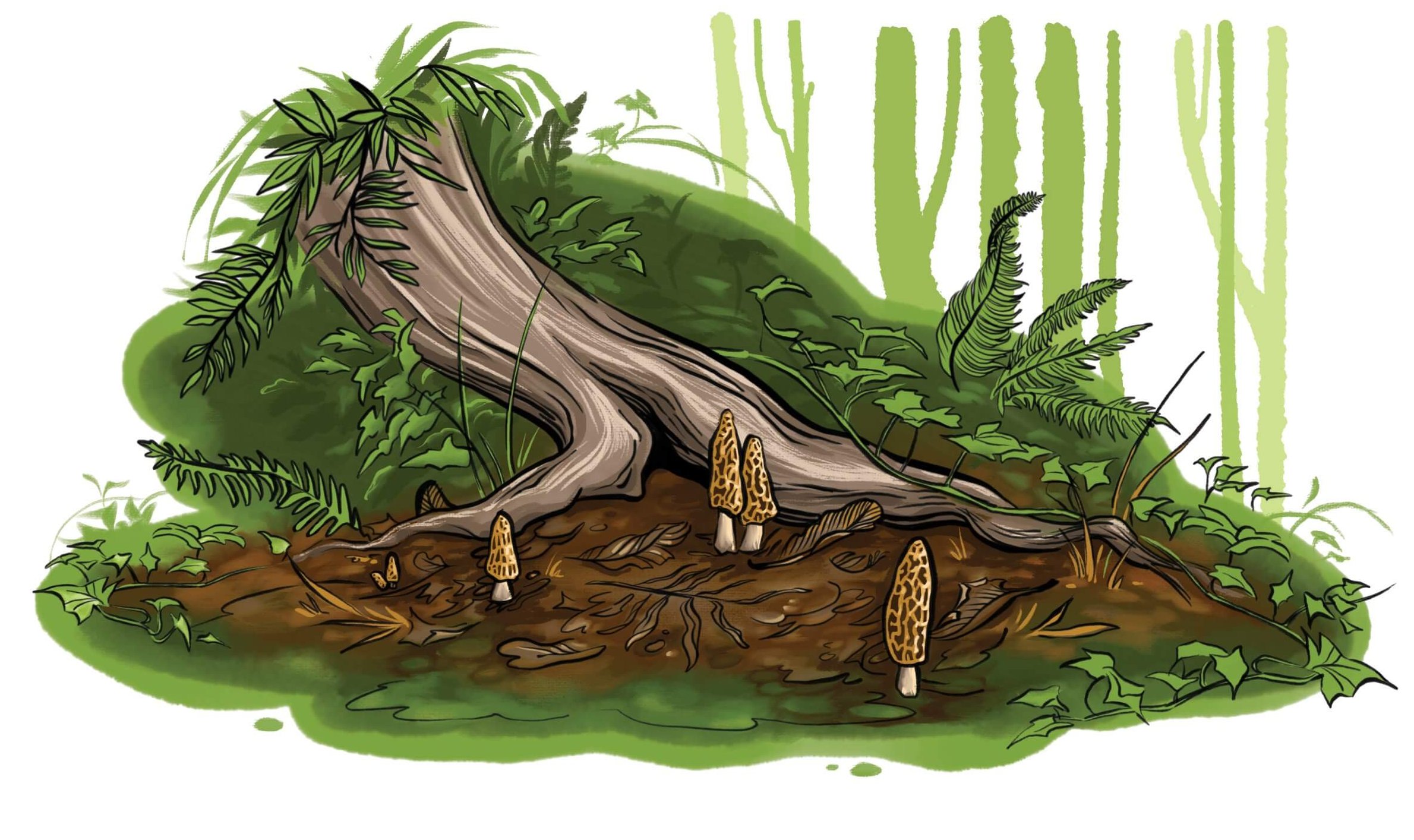Idaho may be known for its spectacular spuds, but the Gem State is also home to many other delightful delicacies, such as morel mushrooms and huckleberries. Due to their rich, earthy, nutty flavor, morels are considered a gourmet ingredient. On the other hand, huckleberries—which happen to be Idaho’s state fruit—are a harmonious blend of sweet and tart. These little berries can be found in a wide variety of locally made treats across the state, including ice cream, pies, jams and more.
If you’d like to get your hands on some Idaho ingredients for cooking, baking or just snacking, we talked with local experts and gathered a few tips for picking morel mushrooms and huckleberries.
Before You Head Out
Keep in mind that good foraging spots are considered precious—you’ll likely come across locals who would prefer to keep their favorite locations a secret. Do some research so that you can find your own beloved picking spots. And, of course, please use caution before consuming wild plants and mushrooms.
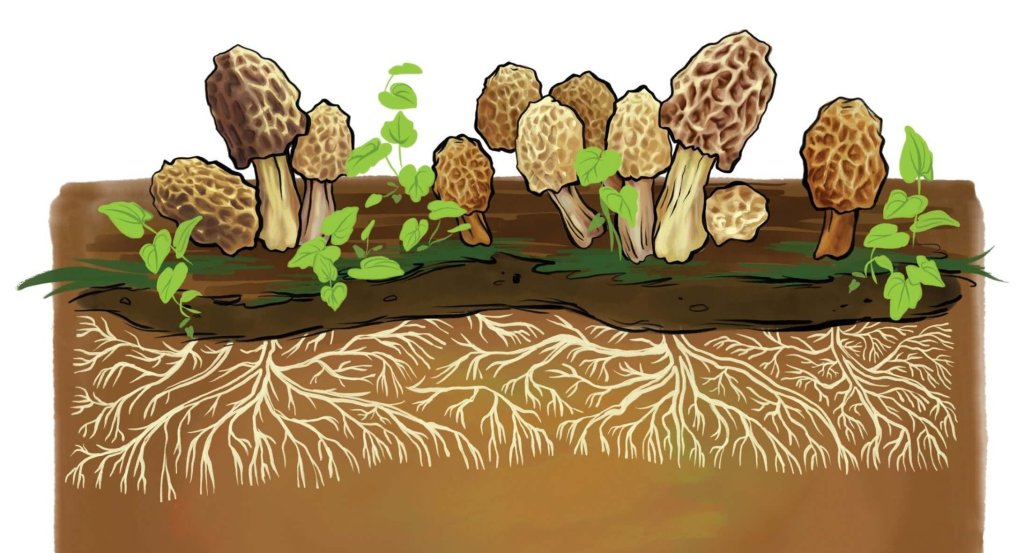
Morel Mushrooms
Where to Go Morel Foraging In Idaho
“Morels of the Northwest can be found in many areas,” says Tim Gerlitz, Club Educator of the North Idaho Mushroom Club. “Set your sights on mixed conifer forests and places that have had recent ground disturbances, such as hiking and game trails and campgrounds. Morels can also be found a year after a forest fire—in areas containing burnt soil.”
What Do Morel Mushrooms Look Like?
Morels come in a variety of colors, ranging from blonde to gray to black. As for the shape, look for something resembling a cross between a sea sponge and a honeycomb.
When to Forage
Morel mushroom season in Idaho generally runs from spring to early summer, with May through mid-June being prime picking time across the state. In northern Idaho, you may find morels into July and August, and even into September at higher elevations if the conditions are right. Warm spring rains can trigger growth, so heading out after those showers can be a smart strategy.
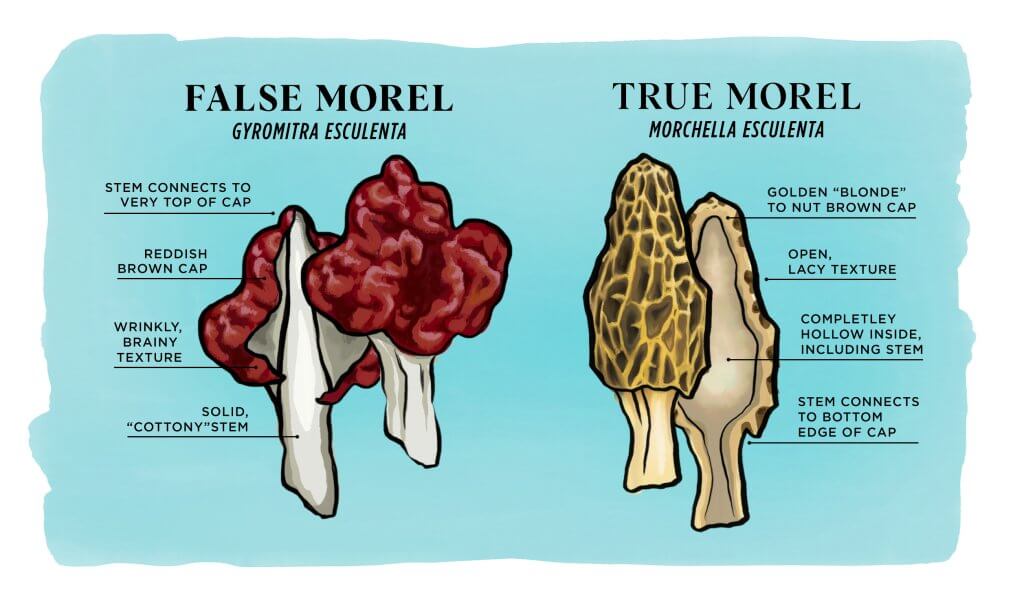
True or False (Morel)?
Before you embark on your mushroom-hunting adventure, be sure you can spot the differences between true and false morels. False morels have reddish-brown caps that are wrinkly and “brainy” with a solid surface. When cut lengthwise, false morels have a solid stem that continues through to attach to the top of the cap, whereas if you’ve found a true morel, the cap will be fully attached to the stem. And if you slice the mushroom in half, it should be completely hollow inside. If you’re unsure what you’ve found is a true morel, do not eat it. As serious mushroomers say, “When in doubt, throw it out!”
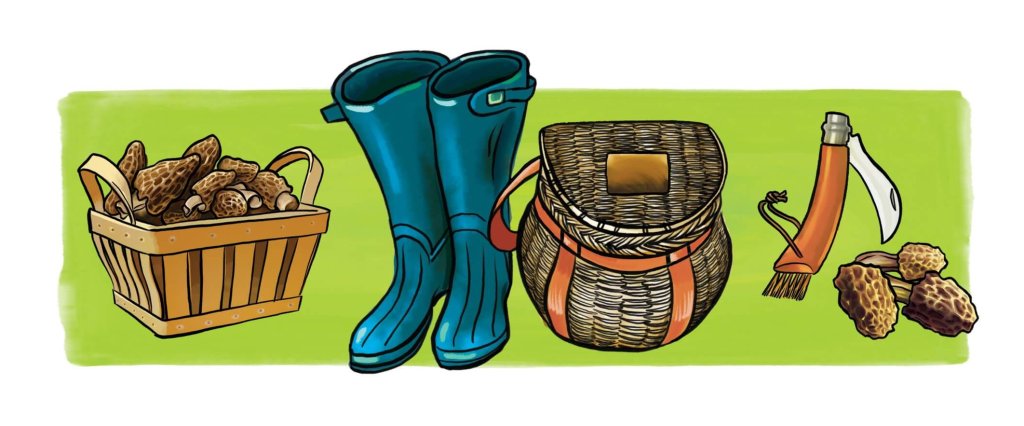
How to Pick Morel Mushrooms
- For those picking morel mushrooms for personal use within the Boise National Forest, permits are not typically required. However, you are only permitted to harvest up to five gallons of morels per person per day, and the mushrooms are not to be sold for profit. Inquire at the local Forest Service offices for further information regarding commercial permits and special cases where personal permits are required.
- “Several studies have shown that pulling [morels] actually results in greater production of morels the following season,” Gerlitz explains. So feel free to pull the morel from the earth, stem and all.
- “There’s no need to worry about ‘over picking,” Gerlitz shares. “You can’t really over-pick a mushroom, as the mycelium in the ground is the actual fungal organism. It’s like picking all the apples from a tree—it doesn’t bring any harm to the apple tree.”
- Use a mesh or paper bag to hold your morels. Cool, dry airflow is the key to keeping your mushrooms fresh.
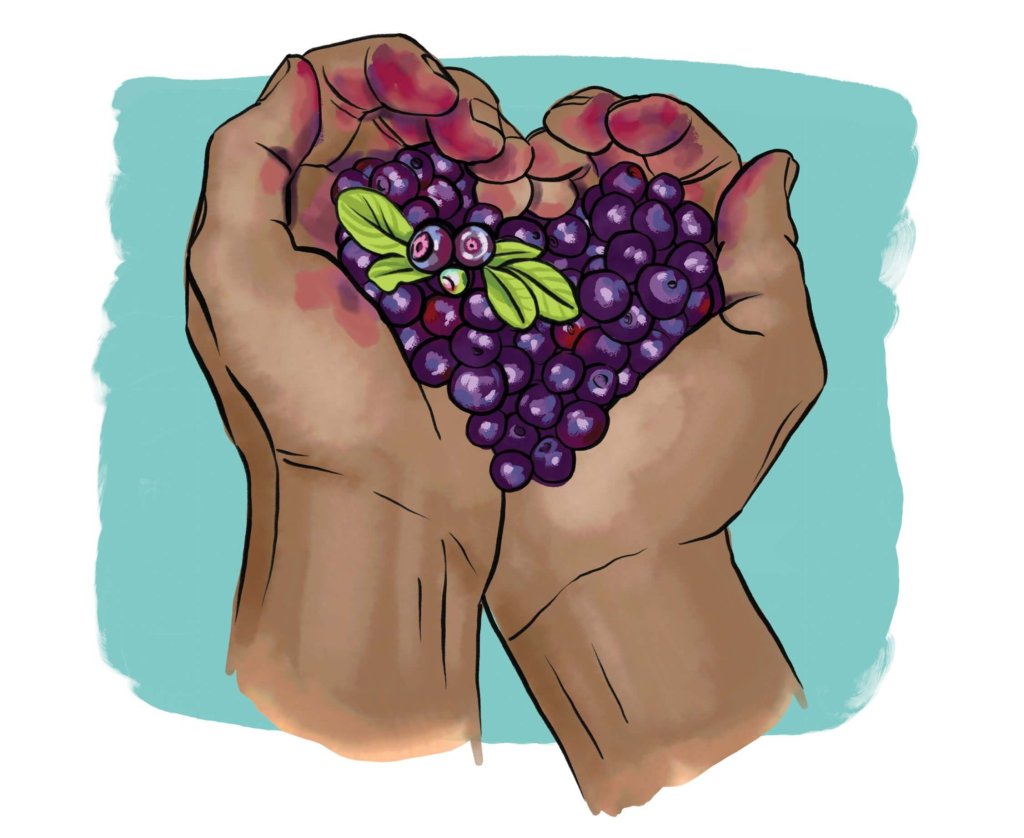
Huckleberries
Where to Find Huckleberries In Idaho
“Most huckleberry species grow in mid- to high-elevation forest areas—high elevations are where they’ll be most ripe,” says Kruz Robles, a huckleberry expert from Schweitzer. These berries typically prefer environments that have a combination of ample sunlight and partial shade, and they can often be found on steep slopes. Look for brushy, old clearcuts and burned or heavily logged areas. Coeur d’Alene National Forest, Priest Lake, Payette National Forest and Teton Valley are some of the best places to pick huckleberries.
When to Forage
Huckleberry season in Idaho typically runs from mid-June through August, depending on elevation. By mid-July, berries on south-facing slopes and lower elevations are the first to ripen and are often at their juiciest. However, foragers can still find excellent picking well into October on cooler, north-facing slopes.
What Do Huckleberries Look Like?
Huckleberry bushes have dark green leaves with thin stems. The berries themselves are small in size, and colors vary from deep red to purple to blue-black.
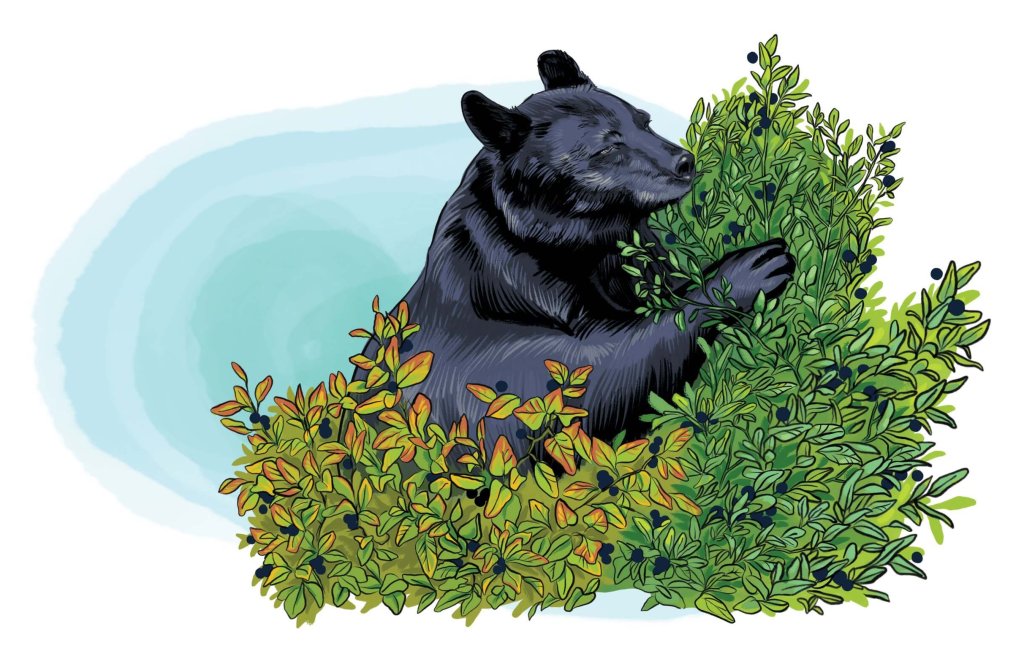
Bear in Mind …
Remember that bears like berries too! Make noise or use a bear whistle as you venture through berry patches—this will let bears know that you’re in the area and will aid in preventing an unexpected encounter. Carrying a can of bear spray is a good safety measure as well—make sure that it’s quickly and easily accessible.
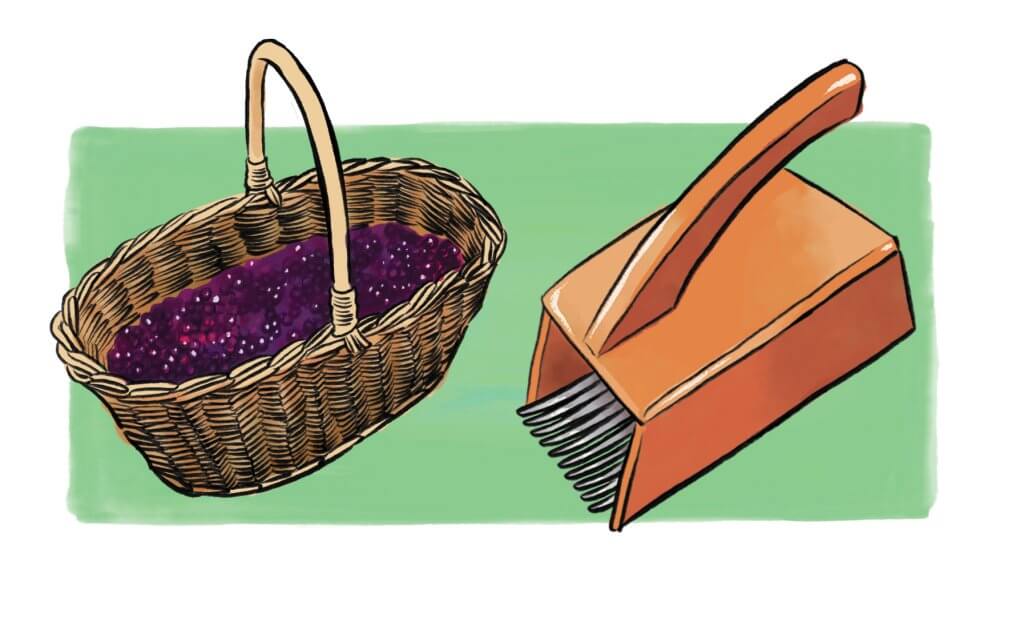
How to Pick Huckleberries
- “It’s recommended to pick huckleberries one at a time by hand,” Robles says. Do not clip or break off branches, as this will cause damage to the plant.
- Do not attempt to remove the plant from the ground altogether. Wild plants live in a competitive environment, meaning if you were to remove a huckleberry bush, another plant would ultimately take its place—resulting in the bush essentially disappearing forever.
- Bring a small bucket or basket to hold your berries, preferably a hands-free container that can be tied through your belt loops.
- Be aware that “picking huckleberries with the intent to sell them is illegal in Idaho Panhandle National Forests,” says Mark Chorzempa from the Priest Lake Ranger District. Should you need any assistance on your huckleberry hunt, “Feel free to stop in any ranger district station for more information.”
- If you don’t have the time to go foraging in Idaho but still want to get a little taste of the state fruit, huckleberries can often be found at local farmers markets.
Forage With Care
As you prepare to go huckleberry and morel foraging in Idaho, keep these tips in mind to protect the environment:
- Watch your step: Avoid trampling plants or creating new trails.
- Pack it out: Keep Idaho’s spaces wild and beautiful by taking all trash with you, along with any bags, baskets or buckets you use for picking.
- Keep your distance: If you encounter wildlife, give them plenty of space.
- Be picky with your picking: Only collect what you can confidently identify as edible.
- Take only what you need: It’s kind to your fellow foragers and supports the animals who rely on morels and huckleberries.
- Respect private property: Stick to public lands and only enter private property with permission.
Now that you’ve got the scoop on huckleberry and morel foraging in Idaho, it’s time to get outside! Care to round out your adventure? Plan a weekend filled with additional outdoor escapades like state park visits, hiking and camping.
A version of this story originally appeared in the 2022 Official Idaho Travel Guide.
Illustrations by Emily Rush.
Updated on April 24, 2025
Published on April 19, 2023

